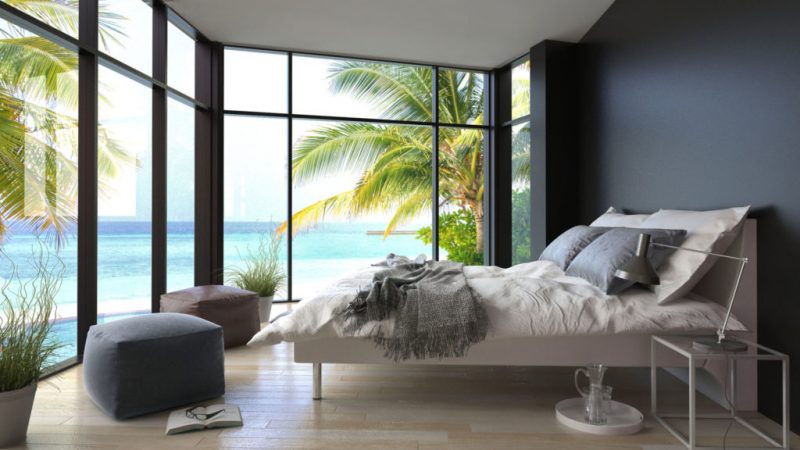
Ready to Ditch the Carpet? Consider These Alternatives
It’s a brave homebuyer who decides to go through with the purchase of a home, despite an ugly, torn, tattered and/or dirty carpet. Floor covering can be pricey, especially if you pine for what many homebuyers do – hardwood floors.
Some of today’s flooring alternatives, while just as attractive as hardwood, aren’t quite as expensive and, depending on your circumstances, there’s one that may be ideal for you.
Concrete
If you think concrete floors are suited only to lofts or industrial décor schemes, think again. New products on the market include ways to make your concrete floor look like hardwood, travertine, marble and more. Or, if you prefer, add a colored stain and shine it to a high gloss.
Advantages to concrete floors include that they are a snap to keep clean and, when sealed properly, they resist moisture. Finishing the floor has become a popular DIY project and far less expensive than installing other floor covering choices.
Finally, concrete is eco-friendly. It doesn’t “deplete natural resources, requires less energy than other floor types to produce, and is made (poured) locally,” according to HGTV’s Kim Hildenbrand. Indoor air quality with concrete floors is far superior to that in homes with carpet as concrete doesn’t mold, doesn’t hold allergens and contains no volatile organic compounds (VOC).
Check out gorgeous examples of acid stained concrete floors online at HGTV, concretenetwork.com and Pinterest.
Cork
As chameleon-like as concrete is for flooring, so is cork, a relative newcomer to the flooring market. “Cutting-edge technology has allowed manufacturers to offer flooring with the amazing look of hardwood or marble, while keeping all the benefits of cork,” claims Marie Proeller on BobVila.com.
Fans of cork floors say that what convinced them to go with the option is how soft the surface feels underfoot. So, if you do a lot of standing, say, in the kitchen, cork may just be your ideal choice. They also like that, since cork is a natural insulator, they spend less on heating and cooling their homes.
Cork — the bark of a tree that renews after its been removed – is also an eco-friendly material.
If, on the other hand, you have pets, kids or just a very busy household, cork may not be a good choice. Because it’s such a soft material, it is easily scratched by pet nails and damaged by anything dropped onto it. Even furniture may cause permanent dents in the flooring.
View images of cork floors on Pinterest and HGTV.
Laminate
Laminate is one of the most popular flooring choices in the U.S. mostly because it provides the look of hardwood without the cost. It is the ideal flooring material for low-traffic homes without children or pets.
Laminate is basically a photograph of wood, bonded to particle board. It comes in a wide array of colors and widths.
One of the biggest complaints about laminate is that, despite manufacturers claims to the contrary, it is a bit high maintenance. Sweeping the floor is not recommended as the dirt and dust may scratch the surface. You’ll need to vacuum it to get it clean and then mop, carefully. Although laminate resists stains, it is not waterproof. Spills that aren’t cleaned immediately will soak into the material, causing it to warp and pull away from adjoining planks.
Linoleum
Linoleum is one of the oldest flooring materials still in use. First manufactured in the mid-1800s, as ship deck covering, it quickly gained popularity as it was installed in large commercial buildings.
Homeowners that have linoleum floors love it for its durability; it’s not at all unusual for one of these floors to last up to 40 years. It is also like cork in that it tends to be soft underfoot and it’s an eco-friendly option (made from linseed oil) and it’s biodegradable once removed from the home. Finally, linoleum doesn’t emit VOCs.
The downside to these floors is that, again, like cork, the material is soft and has a tendency to tear and scratch easily. Also, if it’s not sealed, you’ll need to polish and buff it, making it a bit high maintenance for many homeowners.
Tile
The tile category of flooring includes a number of different materials, including stone, ceramic and porcelain.
Stone floors are ideal for homes in warm climates as they remain cool, regardless of air temperature Stone is nonporous and won’t harbor allergens, so it’s easier on those prone to allergies than carpet and even hardwood. They are also worth considering if you have a busy household with pets and children as they hold up against even the harshest abuse.
Stone floors are expensive to purchase and even more expensive to install. They are also cold, slippery when wet and, because it’s such a hard surface, dangerous to anyone that actually falls on them.
Ceramic, marble and porcelain tile flooring options have come a long way in the past decade. You can now purchase tile wood-look planks as well as tile that resembles stone. Tile flooring, if done right, may add to the value of the home, according to Realtor.com
Tile is ideal for families and pets as it generally doesn’t scratch (although ceramic is a bit more fragile than porcelain) and it requires little maintenance. Homeowners often complain, however, that the surface is cold and hard and, if the tile is glazed, it may become slippery when wet.
Vinyl
Of all the flooring choices available, vinyl, known as a “synthetic cousin of linoleum,” has the worst reputation for emitting VOCs, at least immediately after it’s installed. Today, however, you’ll find vinyl manufacturers who use products that have achieved Indoor Air Quality Certification (Naturcor is one).
Luxury vinyl plank flooring, especially in a faux wood pattern, is one of the biggest sellers over the past few years, according to flooring specialists. Homeowners love their vinyl floors for being water and stain resistant, easy to clean and durable.
Vinyl flooring comes in sheet, tile and, as mentioned, plank styles that are either glued down or snapped together, making installation the ideal DIY project for a handy homeowner.
Powered by WPeMatico




Recent Comments